Holy War in Ukraine
Ukraine’s largest Orthodox church is accused of collaborating with Russia.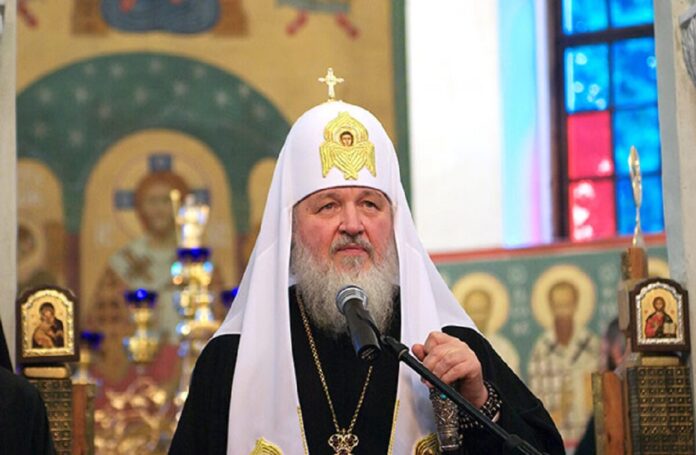 Russian Patriarch Kirill i/ Agencia Nova
Russian Patriarch Kirill i/ Agencia Nova
This article was originally published on opendemocracy.net.
Ukraine’s largest Orthodox church is in crisis over its ongoing connections to Moscow. It faces a ban by the Ukrainian government, raids by the security services and internal turmoil.
The Ukrainian Orthodox Church of the Moscow Patriarchate has hundreds of thousands of followers in the country. But since Russia’s invasion this year, it has come under increasing scrutiny. Until May it was officially subordinate to the Russian Orthodox Church, based in Moscow, and its leaders appear unwilling to make the break complete.
At the start of December, President Volodymyr Zelenskyi announced that the Ukrainian state would prevent “religious organisations affiliated with centres of influence in the Russian Federation” from operating in the country for the sake of Ukraine’s “spiritual independence”. Sanctions have also been imposed on a number of clergy.
Church members say they do not know what to expect next, and claim they are being persecuted by the authorities. The Ukrainian security services (SBU) search churches and monasteries almost every day, claiming that they are looking for weapons and saboteurs.
The sudden surge of interest in the church may result from the desire of the new SBU chief, Vasyl Malyuk, to improve the image of his agency. In November, it was revealed that the organisation had discovered 700 pro-Kremlin collaborators in its ranks.
Changes in Zelenskyi’s circle of advisers may also have been responsible. The president recently said he is consulting on church issues with Viktor Yelenskyi, a leading religious scholar who advocates for a ban on the Moscow-linked Ukrainian Orthodox Church.
First, some background. Eastern Orthodox Christianity is the largest religious confession in modern Ukraine. The country has had several Orthodox denominations, which have all vied for the role of ‘national church’ since the 1990s.
The largest in terms of parishes and monasteries is the Moscow-affiliated branch of the Ukrainian Orthodox Church. On the eve of Russia’s full-scale war, this church counted more than 12,000 communities in the country.
The second- and third-largest churches were the Ukrainian Orthodox Church, Kyiv Patriarchate – a patriarchate is an organisation that is in charge of an Orthodox church in a particular region – and the Ukrainian Autocephalous (that is, independent) Orthodox Church. Since 2018 these two churches have been formally united in the Orthodox Church of Ukraine, which has no affiliation with any other patriarchate.
These three denominations had identical doctrine and rituals; they differ only on matters of church independence. Indeed, the Ukrainian state’s attitude towards the Moscow-led Ukrainian Orthodox Church has been in constant flux over the past 30 years between favouritism, pressure and neutrality – depending on who has been in power.
But with the start of the war in Donbas in eastern Ukraine in 2014, the image of the “Moscow church” deteriorated significantly.
Apart from failing to condemn collaboration, the church leadership has not attempted to revise any of its liturgical texts, and continues to actively use highly controversial prayers that honour figures from Russia’s military past.
The church’s leadership referred to the conflict as a “civil war” and many priests were accused of collaborating with pro-Russian armed groups. The very fact of subordination to the Russian Orthodox Church, which acts as an ideological support to the regime of Vladimir Putin, also led the Ukrainian state and many Ukrainian citizens to see the Ukrainian Orthodox Church as an instrument of Moscow’s “soft power” – and one that is harmful to the Ukrainian national project.
In 2018, Ukraine’s then president Petro Poroshenko organised the recognition of a separate Orthodox Church of Ukraine by Constantinople, a mother church for eastern Orthodoxy. This new church united the Kyiv Patriarchate, and Autocephalous Church into a single institution against the threat of the Moscow patriarchate to Ukraine’s national security.
This new church claimed continuity with the 100-year history of Ukraine’s Autocephalous Orthodox Church, and counted around 7,000 communities from the former Kyiv Patriarchate and Autocephalous Church. Though some Moscow patriarchate communities moved to this new church, most remained inside their original church.
The longer Russia’s war against Ukraine has dragged on, however, the louder the calls for a ban on the ‘Russian church in Ukraine’—the Ukrainian Orthodox Church that used to be loyal to the Moscow patriarchate. And the louder the voices inside that church have been calling for change—and true independence.
The revolt inside the Moscow-affiliated Ukrainian Orthodox Church this year started with parish priests who had to deal with growing public anger over any links to Russia.
To calm their parishioners, these priests began a mass movement to refuse to honour Patriarch Kirill of Moscow—the overall head of the Russian Orthodox Church and an outspoken supporter of Russia’s war against Ukraine – at church services.
They also petitioned the church leadership to withdraw from the Russian Orthodox Church. Many also demanded change to the very structure of the Ukrainian church, giving more powers to parishes.
Under pressure, the Ukrainian Orthodox Church council proclaimed “full independence” from Moscow on 27 May. Yet the church’s leadership did not itself use the term ‘autocephaly’, or formal independence.
Instead, the church simply confirmed its status as “independent and self-governed”, which it has been anyway since 1990. Had the church’s head, Metropolitan Onufriy, proclaimed autocephaly, no other church would have recognised it. For most of the Orthodox world outside Russia, there was already an autocephalous church in Ukraine: the Orthodox Church of Ukraine, set up in 2018. And church law does not permit more than one autocephalous church per country.
This strategy was greeted with enthusiasm by the rebellious priests, who saw it as a first step in the right direction. But the next step never came. The legal amendments on the Ukrainian Orthodox Church’s independence were never published.
In addition, the church’s main governing body, the Holy Synod, has not changed at all. All the key figures who are believed to oppose moves towards the church’s independence from Moscow retain their positions and still set the agenda.
Perhaps the most eloquent evidence of internal confusion over independence came from the Union of Orthodox Journalists, the largest Orthodox media organisation in Ukraine. Discussing the church council’s decision on independence, the union said: “We do not know what status our church will have in the future.”
Most of those people do not sympathize with Russia in the slightest, but they also do not want to leave their church.
Meanwhile, a debate about collaboration with Russia has raged within the church itself. Since the invasion, many bishops and priests who found themselves in towns and cities occupied by Russia have cooperated with the occupying forces. They also refused to recognise the church’s declaration of independence in May.
Furthermore, several bishops in Ukraine-controlled areas have been charged by Ukrainian law enforcement with inciting ethnic hatred and spreading propaganda in support of the ‘Russian world’—the ideology of cultural, spiritual and linguistic unity binding speakers of Russian together.
Metropolitan Onufryi and his synod have not condemned any cleric who has collaborated with Russian forces, but have dismissed all such accusations. In November, the synod issued a statement saying that they “are not collaborators. On the contrary, many of them are real heroes.”
This caused a stir not only in Ukrainian society but also among priests.
“If our church leadership has not been able to condemn collaboration in nine months… then let the state get involved, please, let our security services investigate,” said one priest, Father Prokopchuk.
Apart from failing to condemn collaboration, the church leadership has not attempted to revise any of its liturgical texts, and continues to actively use highly controversial prayers that honour figures from Russia’s military past.
In the seven months since the declaration of independence from Moscow, the leadership of the Ukrainian Orthodox Church has failed to convey an unambiguous message about its break with Russia not only to Ukrainian society in general, but also to its own priests.
Bishops are afraid to condemn other bishops for collaborating with Russia on grounds of professional solidarity, which exacerbates internal frictions within the church.
It’s not surprising that many priests of the Ukrainian Orthodox Church now openly support investigations by the Ukrainian authorities. Some have even jokingly called the Ukrainian security services “God’s Service of Ukraine”, which, they say, is ‘cleansing’ their church from the ‘Russian world’.
At the moment, it is difficult to imagine what a complete ban on the Ukrainian Orthodox Church might look like and whether it will do more harm than good. Despite the pro-Russian bishops and the absence of noticeable steps towards the practical implementation of complete independence—from the language of worship to church reform—the church encompasses a huge network of religious communities in Ukraine.
Most of those people do not sympathize with Russia in the slightest, but they also do not want to leave their church.
Your support matters…Independent journalism is under threat and overshadowed by heavily funded mainstream media.
You can help level the playing field. Become a member.
Your tax-deductible contribution keeps us digging beneath the headlines to give you thought-provoking, investigative reporting and analysis that unearths what's really happening- without compromise.
Give today to support our courageous, independent journalists.
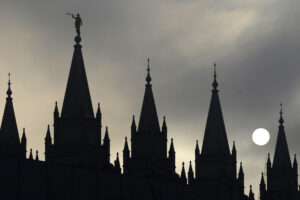
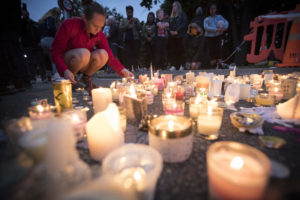
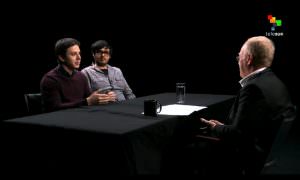
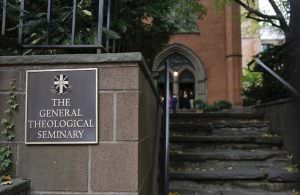
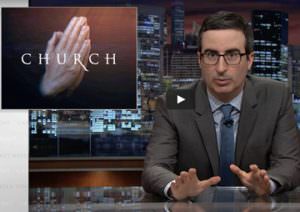
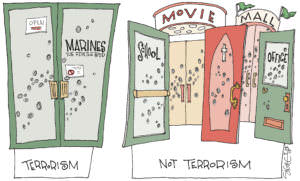


church disputes seem to be of extremely little importance